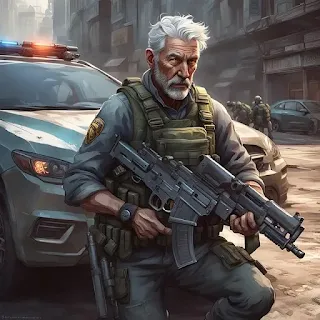Character modeling, within the expansive realm of digital art and animation, has undergone a remarkable evolution over the past few decades. From simple pixelated sprites to intricately detailed, lifelike avatars, the journey of character modeling reflects not only advancements in technology but also the creative aspirations of artists and the demands of audiences. This article delves into the rich history, techniques, and future possibilities of character modeling, tracing its trajectory from its humble beginnings to its current state and beyond.
The Early Days: Pixel Art and 2D Sprites
The birth of character modeling can be traced back to the early days of video games, where limitations in technology gave rise to simple pixel art and 2D sprites. Games like Pac-Man and Super Mario Bros. featured iconic characters created within strict technical constraints, yet they captured the imaginations of millions. Artists had to work within tight pixel counts, leading to ingenious techniques to convey personality and expression with minimal detail. Despite limitations, these early characters laid the foundation for the medium and inspired future generations of artists and developers.
The transition to 3D modeling marked a significant milestone in character design, enabling greater realism and expressiveness. Games like Doom and Quake pioneered 3D character models, albeit rudimentary by today's standards, but revolutionary at the time. Early 3D models were often blocky and lacked fine detail, yet they represented a leap forward in immersion and player engagement. The emergence of powerful graphics hardware and software paved the way for increasingly sophisticated character modeling techniques.
Rise of Realism: Motion Capture and Advanced Texturing
As technology progressed, so did the quest for realism in character modeling. Motion capture technology allowed for lifelike movement and animation. Games like the Grand Theft Auto series and The Last of Us showcased characters with nuanced expressions and fluid movements, blurring the lines between virtual and reality. Advanced texturing techniques such as normal mapping and physically
based rendering added depth and detail to character models, enhancing their believability. Character artists began to focus on anatomical accuracy and subtle nuances of expression, striving for cinematic levels of realism.
While realism has its place, character modeling also encompasses a wide range of artistic styles and approaches. Games like Journey and Cuphead demonstrate how stylized characters can evoke emotion and captivate players through unique visual aesthetics. Character artists leverage diverse influences, from traditional animation to avant-garde art, to create compelling and memorable characters. Customization has become a key aspect of character modeling, allowing players to create avatars that reflect their individuality and identity.
Looking ahead, the future of character modeling is brimming with exciting possibilities. Advancements in artificial intelligence and procedural generation could streamline the character creation process, empowering artists to focus more on creativity. Virtual and augmented reality technologies offer new avenues for immersive character experiences, blurring the boundaries between the digital and physical worlds. With the rise of metaverse platforms, character modeling will play a central role in shaping virtual identities and social interactions. Ethical considerations, such as diversity and representation, will continue to influence character design, fostering more inclusive and culturally rich virtual environments.
Character modeling isn't confined to the realm of entertainment; it's increasingly finding applications in diverse fields, including education, healthcare, and marketing. In education, interactive virtual characters can enhance learning experiences by providing personalized instruction and feedback. Medical simulations leverage character modeling to train healthcare professionals in surgical procedures and patient care. In marketing, companies use branded avatars and mascots to engage with consumers in immersive digital environments. As character modeling technologies continue to advance, the boundaries between the real and virtual worlds will blur further, opening up new opportunities for innovation and collaboration across industries.
Click here to get a professional artist for character modeling.
Artistic Expression in Character Modeling
The Future of Character Modeling
Character modeling has evolved from humble beginnings to become a cornerstone of digital entertainment and interactive experiences. From pixelated sprites to photorealistic avatars, the journey of character modeling reflects the relentless march of technology and the boundless creativity of artists. As we look to the future, character modeling holds the promise of ever greater immersion, personalization, and storytelling potential, enriching our digital lives in ways yet to be imagined.
Additional paragraph:
Bridging the Gap Between Real and Virtual Worlds















No comments:
Post a Comment